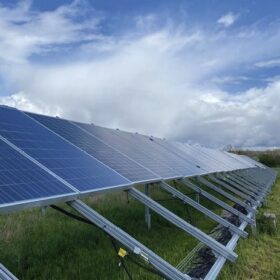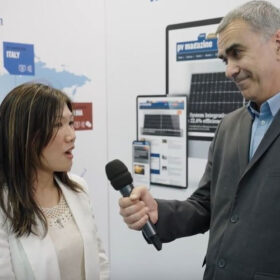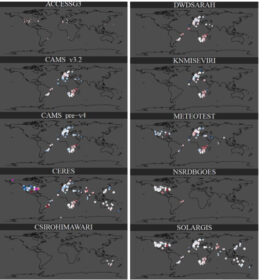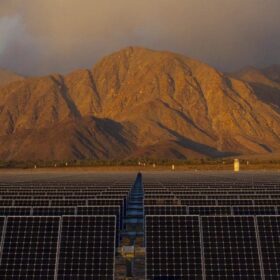Thirty years of photovoltaic module degradation
Scientists in Europe have put together a comprehensive guide to PV module degradation, examining literature and case studies on the topic as far back as the 1990s. Their paper details the primary stress factors faced by modules in the field, the most common modes of degradation and failure, and provides clear definitions relevant to reliability, quality and testing standards. Among their key findings is that a full understanding of how combinations of different stresses over varying timeframes is still missing from methods to estimate and improve system reliability.
Weekend read: Solar’s known unknowns
Historic meteorological data is typically used to assess solar farm yield and secure project finance, but with climate change beginning to affect every aspect of society, past weather data may no longer be a reliable guide. Everoze Partner Nastasia Pacaut looks at how PV projects can be future-proofed in a changing climate.
All solar cell efficiencies at a glance – Martin Green team update
The research group led by Professor Martin Green has published Version 62 of the solar cell efficiency tables. There are 21 new results reported in the new version, a record number for the Tables.
‘It could be a difficult time going forward for solar module makers’
In the second interview of a series held at Intersolar 2023, pv magazine spoke with Karen Tang, Director – Editorial Lead Europe at Singapore-based market research company OPIS, about current price trends in the industry. She said solar panels may soon be bought at an average of USD 0.185/W but she also revealed that offers under USD 0.15/W are now becoming more frequent. Furthermore, Tang said prices may continue to drop in the future, with the bottom line being difficult to determine. Much will depend on the actual manufacturing capacity we will see coming online, which may not match the huge number of recent announcements released by module producers.
Global benchmark for solar irradiance data released by IEA-PVPS
The International Energy Agency’s Photovoltaic Power Systems Programme (IEA-PVPS) has published a report to help the solar industry to choose appropriate surface radiation models and data providers based on location and application requirements.
Inside the impacts of soiling
Scientists in India carried out a comprehensive study into the impacts of soiling on PV modules – measuring the amount of performance loss caused by different types of dust and bird droppings, and for modules installed at various tilt angles, in the hot-dry climate of Vellore in southern India. Their findings could allow developers to better take into account and mitigate the effects of soiling during site selection and system design.
Bslbatt unveils 100-mm batteries for rooftop solar
China’s Bslbatt says its new batteries have 10.24 kWh of storage capacity and a nominal voltage of 51.2 V. It measures 700 mm x 980 mm and is 100 mm thick.
Solar-plus-storage microgrids minimise power shutoffs during wildfires
Lawrence Berkeley National Laboratory researchers have shown that microgrids equipped with solar-plus-storage systems can maintain an average levelised cost of energy (LCOE) below USD 0.30/kWh and limit annual public safety power shutoffs to 2% to 3% of annual energy demand.
Canadian Solar unveils 700 W bifacial TOPCon solar modules
Canadian Solar is offering six versions of its 132-cell TOPBiHiKu7 solar modules, with power outputs ranging from 675 W to 700 W and efficiencies ranging from 21.7% to 22.5%. They have an efficiency range of 26.1% to 27.0%, with a bifacial gain of 20%.
China polysilicon prices in freefall
In a new weekly update for pv magazine, OPIS, a Dow Jones company, provides a quick look at the main price trends in the global PV industry.















